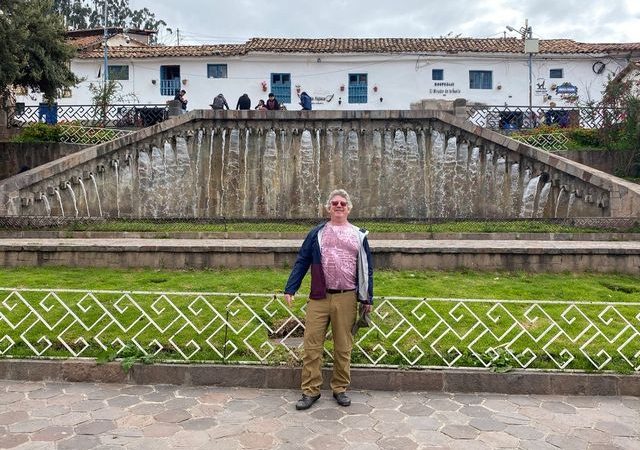Our last day was spent in the historic city of Cusco before flying back to Lima. There was a final group dinner scheduled in Lima but I had made a reservation at the world famous Central restaurant. You can read about that experience in my food blog culinarylarry.
The city of Cusco. Cusco’s means “belly blossom” – the centre of the universe. Inca architecture is in 2 parts – each having a balance on the other. So the city would have an upper and lower segment. It is not a status thing, just a counterpart.
The lower part had a Temple of the Sun that we saw at the cathedral. The upper part had this Temple of the Sun called Sacsayhuamán. It was a house, not a fortress (which the Spanish thought it was).
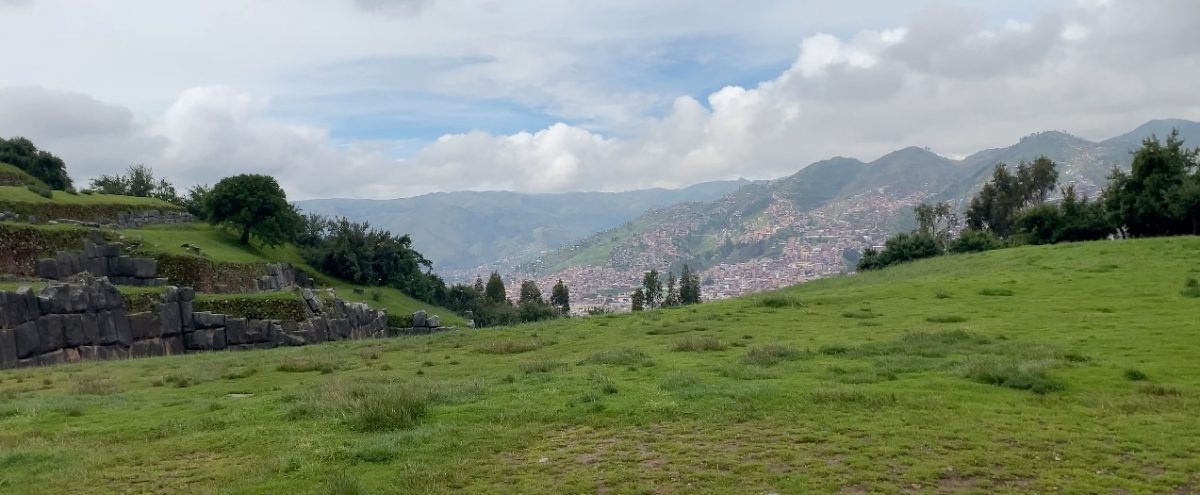
“Inca Manco Capac was the founder of the city of Cusco. The inner city of Cusco was laid out in the shape of a puma whose head was the fortress of Sacsahuaman. His body was shaped by the rivers Tulumayo and Huatanay and his tail was where both rivers meet in a place known as Pumaq Chupan. His heart was the Huacapata or holy square containing the Coricancha or Temple of the Sun.” – Discover Peru

Here we visited the Fortress of Sacsayhuaman (the head of the puma).
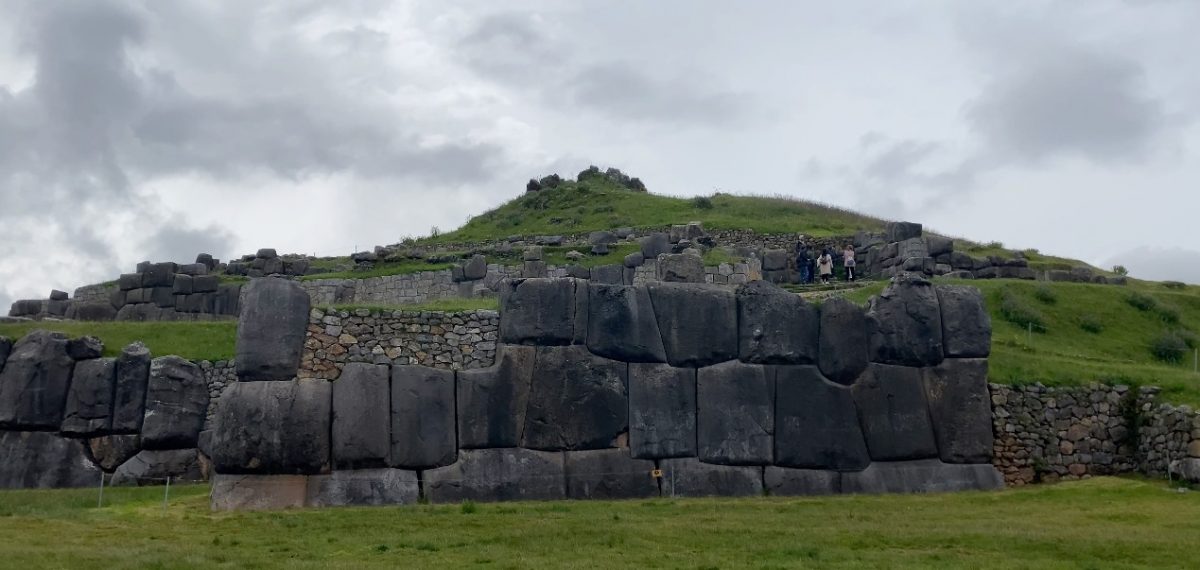
This natural outcropping was considered a gift from Mother Earth. So stones were placed around it for protection. Unfortunately, the hill top was where the Pope, John Paul II, appeared in 1985. The church wanted to honour the event by putting a cross on the top after he left.
However, the locals didn’t think a cross belonged on the hill because it is an Inca shrine. They burned the cross. The church put the cross up 7 more times and each time the cross was burned. Finally they put the cross on another hill.

The keystone in the centre was 120 tons. The Inca used levers and ply boards to lift and set the stones around them. They used cedar wood beams to lift one section and then cut the stone using a plumb bob. Skeletons of people without limbs indicate how dangerous this work was.

A corner keystone used to build a wall extension.

The precision of the cut and inlay indicate that this was a religious act for the Inca.
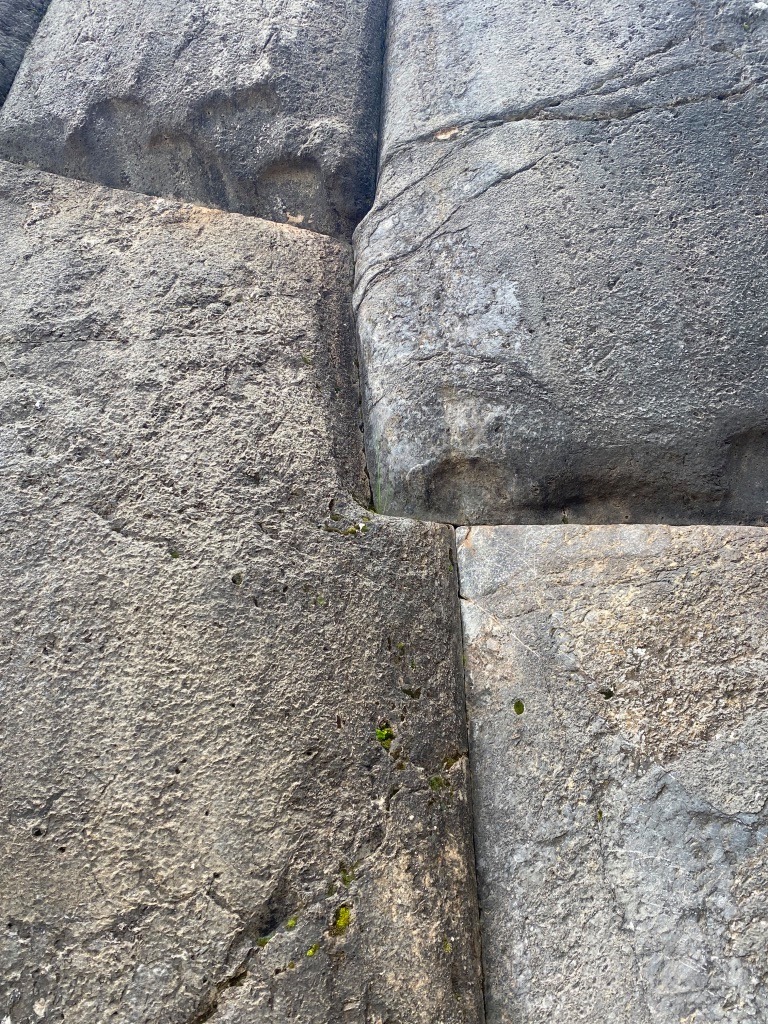
A guy was following us around taking pictures. Later, he showed up at our lunch restaurant with these prints – selling them for 10 Sol. I admired his intrepidness to bought one.
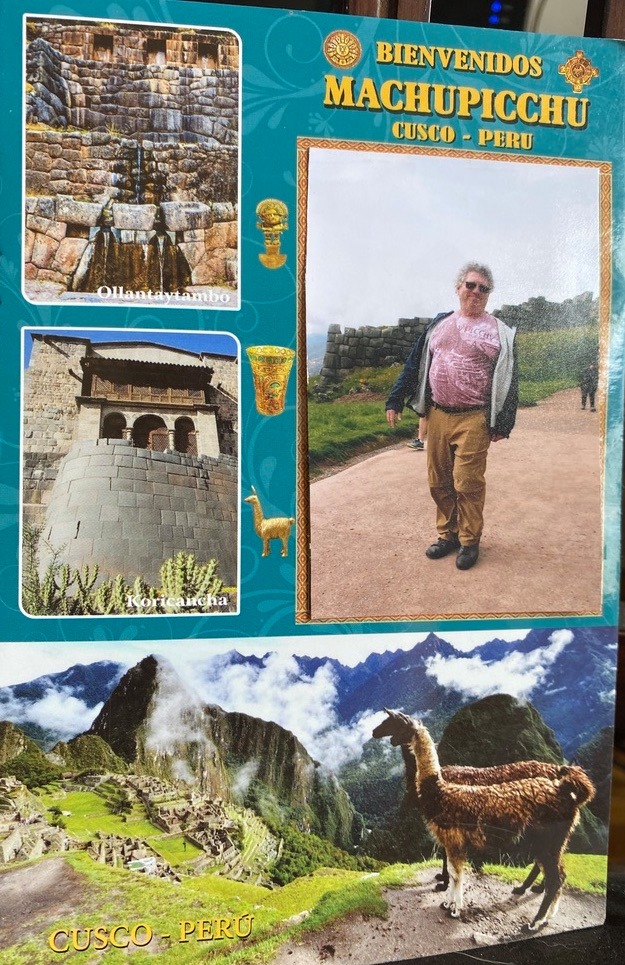
On the back was a layout showing the Puma design. I thought it was worth it.
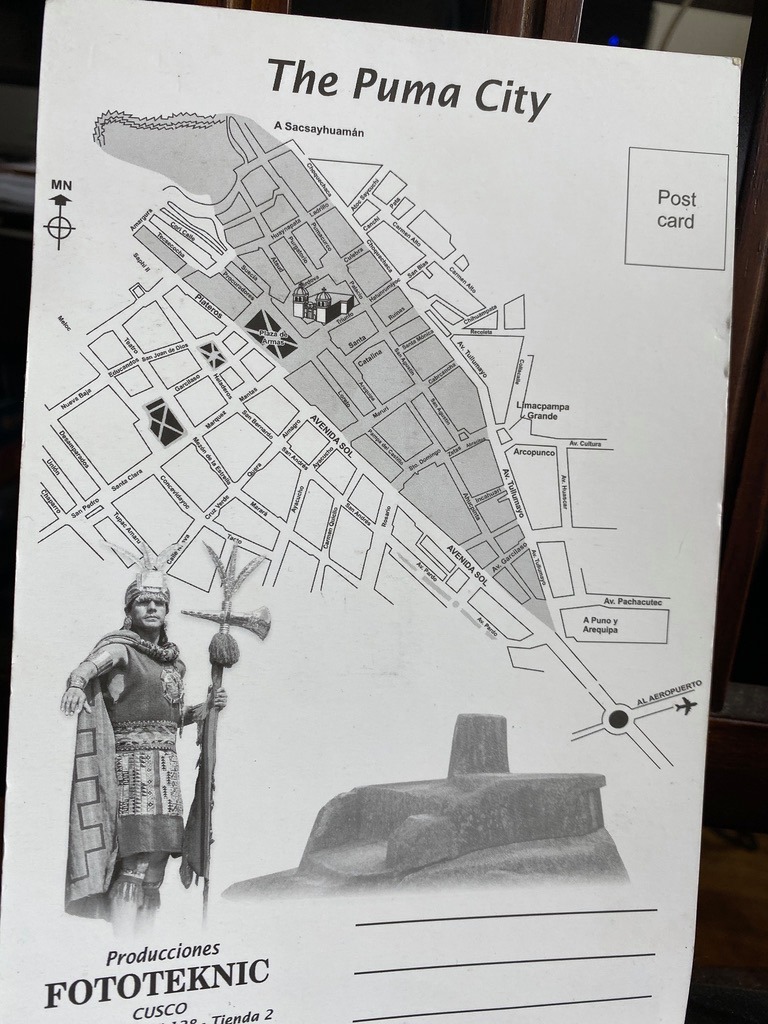
Heading back to our bus, we stopped at an artist’s square. In the centre back is a Roman Catholic school. to the right is the oldest church in Cusco.
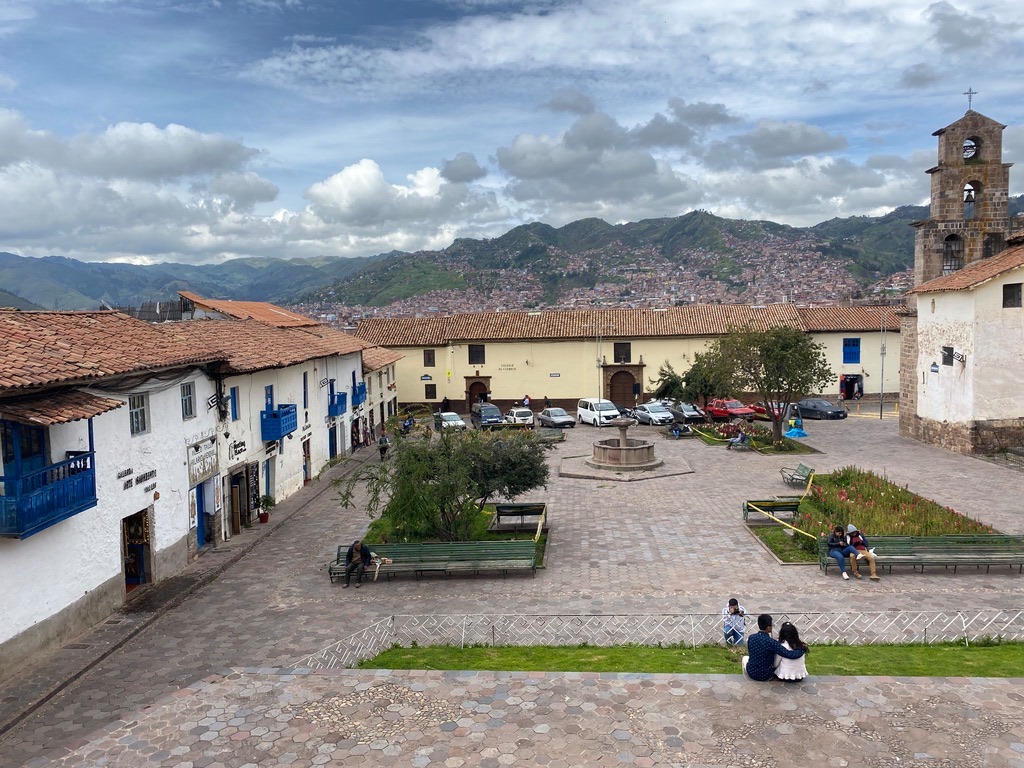
Fountain in a neighbourhood frequented by artists. Little shops, cafe, and locals. During festivals, the place is packed.


The bus took us back to downtown Cusco where we visited the cathedral. The Cathedral of Cusco, built over the Inca’s Temple of the Sun. If Cusco was the centre of the Inca empire, then this Temple of the Sun was the centre of the centre.

The Inca temple is preserved within the cathedral. The walls leaning inwards – characteristic of Inca design. These structures have survived 2 earthquakes greater than 8 on the Richter scale. Which is more than can be said for the Spanish buildings.

Lining up the windows for summer solstice.. There is a block to stand on so you can look through the windows.

The Southern Cross constellation showing the Llama to the right and a man raising his arms in the centre.

The Dominicans were the first Catholic order to arrive in Cusco. The Spanish Conquistadors gave large portions of their wealth to the Dominicans to get into heaven. The money went into building the cathedral.
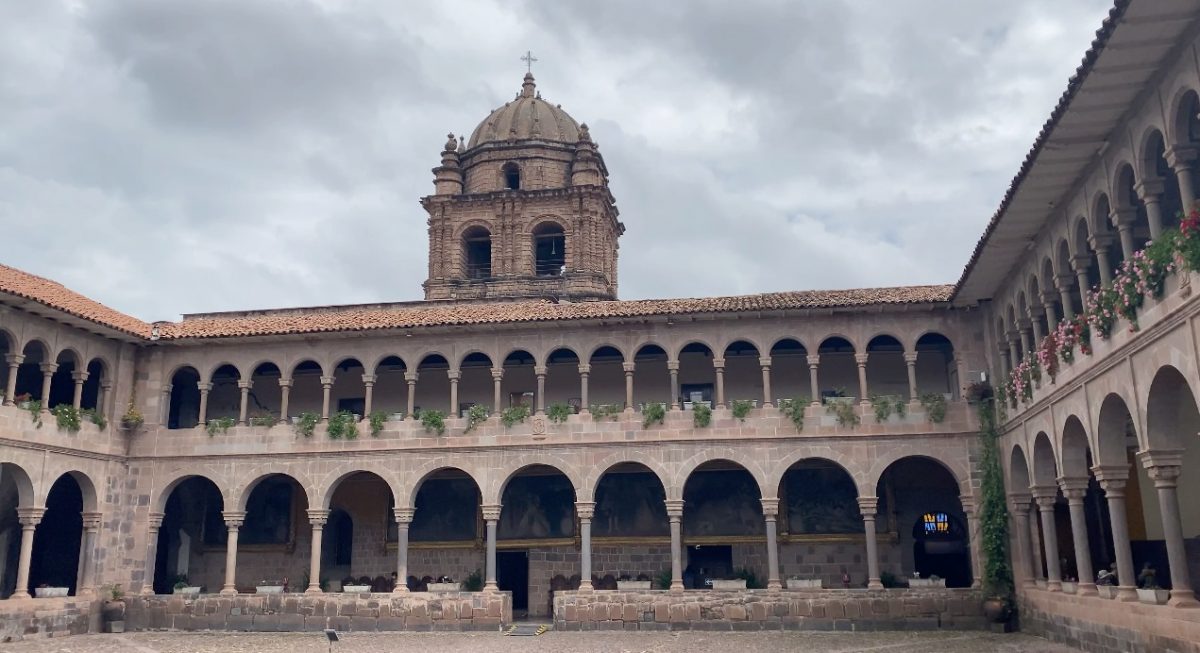
Peru’s national flower – fuschia.

We could not take photos inside the church so bought postcards. This painting, from the 1700’s, of The Last Supper, shows Jesus and the apostles sitting down to a dinner of guinea pig. I explain more about guinea pig in my food blog.

This statuis The Lord of the Earthquake. At one time, when there was an earthquake, they took the statue outside and prayed. The earthquake stopped. After that they lit candles as a thank you. The carbon from the candles turned the white Jesus to black.

Inside the silver altar is a car. Corpus Cristi is the event that the Catholic Church used to replace the Inca summer solstice. During Corpus Cristi, the car drives the altar out as part of the procession.


Had a fabulous lunch before flying back to Lima. Salmon

Roasted stuffed pepper.

Lemon ice cream and lemon ice.

And that was the end of an amazing adventure. When I thought of this trip, it was only Machu Picchu that I was interested in. Senior Discovery Tours planned a trip that went beyond my expectations – history, architecture, food, art, great stories, wonderful guides and terrific friends. Looking forward to my next tour with them.
